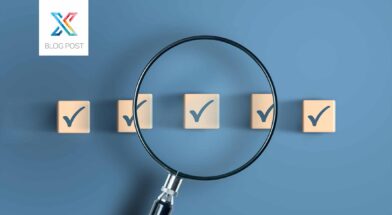We’ve been helping professional services firms develop and implement client experience management programs using data and insights to improve revenue, referrals, and repeat business for 17 years. In this blog post, we're sharing a list of 50 best practices we've seen successful client experience (cx) leaders implement.
- Establish your client experience (CX) vision and share it throughout your organization.
- Set client-focused goals.
- Get others in the company involved and invested.

- Know what’s worked before, benchmark and measure over time
- Align marketing, sales, and customer service to deliver a consistent message and experience
- Identify key performance indicators (KPIs)
- Understand the goals and objectives for your program
- Monitor progress toward goals and objectives with KPIs
- Turn data into action
- Recalibrate your client experience program as you gather more feedback and data
- Be transparent – we’re going to ask for your feedback and we’re going to respond to your feedback
- Set expectations and keep commitments, do what you say you will do when you say you will do it
- Ask smart, incisive, thought-provoking questions
- Thank everyone for their engagement and feedback
- Respect requests for reduced frequency or other ways to receive their feedback
- Start small and scale – work out kinks with smaller groups
- Be consistent – how you present your brand, your tone, your responses. Consistency build trust, inconsistency breeds confusion, and distrust.

- Be open to feedback from all constituents and involved parties
- Personalize queries to enhance connection and relevance
- Show you care and are aware of what the most relevant issues are on the project, or for the individual
- Design repeatable workflows and frameworks to focus on asking more thoughtful and insightful questions
- Use a consistent template so respondents learn how it works, become accustomed to it, and are able to answer quickly and easily
- Keep the client experience of users’ top-of-mind
- Be mobile-friendly – make it easy to provide feedback on any device
- Use images to make an emotional connection and communicate functionality
- Make the call-to-action bold and clear – there should be no confusion over what you want the respondent to do
- Communicate efficiently – make what you send easy to scan for the key points with short paragraphs, bullets, and numbered lists
- Be inclusive and empathetic – be considerate of everyone’s needs, preferences, and platforms
- Test with and without images
- Preview and review
- Be relevant – address potential pain points to elicit useful feedback

- Be reliable. Send queries when you say you will, thank all respondents for their feedback, and respond to any and all concerns in a timely manner
- Be clear about why this feedback is important and what will happen to it
- Tell stories using feedback and data
- Keep it simple – one point per story
- Get respondents’ attention with a compelling subject line and let them know the expected time to complete
- Include a subhead that reinforces what you want the respondent to do and why
- Have a clear call-to-action
- Be sensitive to other communications being sent and received in proximity to your survey
- Test everything – subject lines, days, times, length of time for response
- Build your data and feedback framework that works for your firm based on your objectives
- Map your client feedback process and highlight where friction occurs
- Monitor statistics on transactional messages (thank you’s and follow-ups)
- Be responsive to requests in a timely manner – let the respondent know you heard them and are addressing their request
- Automate wherever possible without losing the human touch
- Be proactive – anticipate respondent needs
- Personalize as much as possible
- Segment where beneficial
- Client Experience (CX) leaders find the best cadence, data collection, and response methodologies for clients and their firm
- Put your employees first and your customers a close second

What else?
Anything we missed?
Which of these resonate with you as a Client Experience (CX) leader?
Thank you for sharing your thoughts on how we can improve the client experience for professional services firms. Interested in a case study? Here's one!
Interested in beginning or expanding a Client Feedback or Client Experience program, or just want to learn more? Click the button below to talk to a customer experience consultant.





